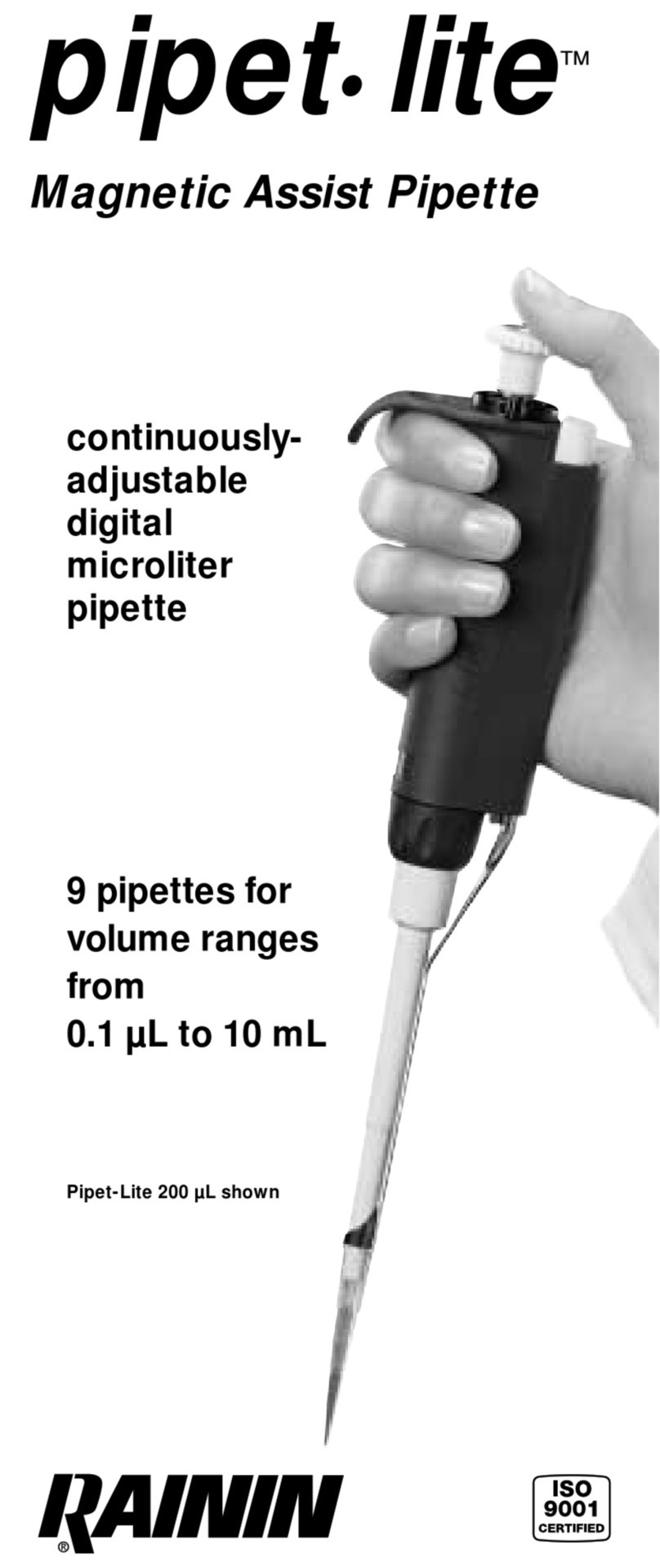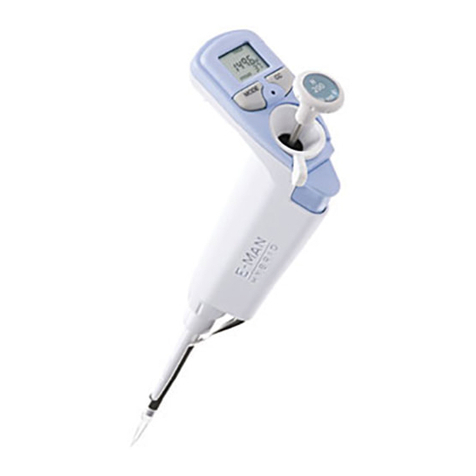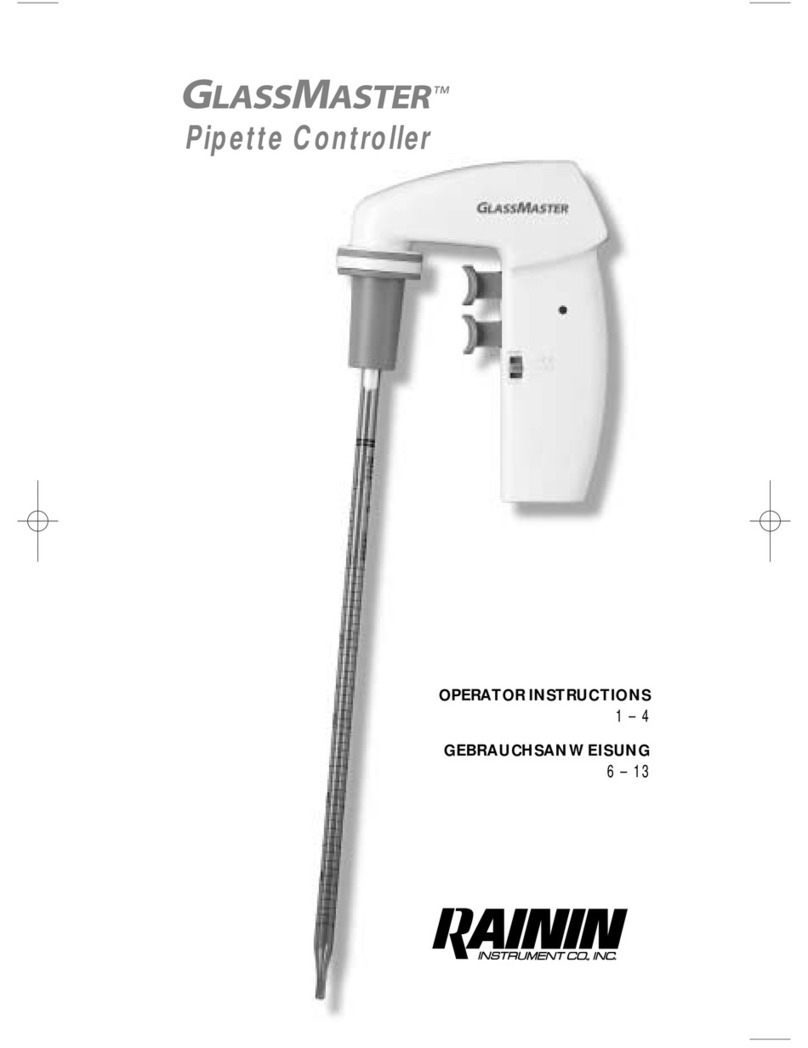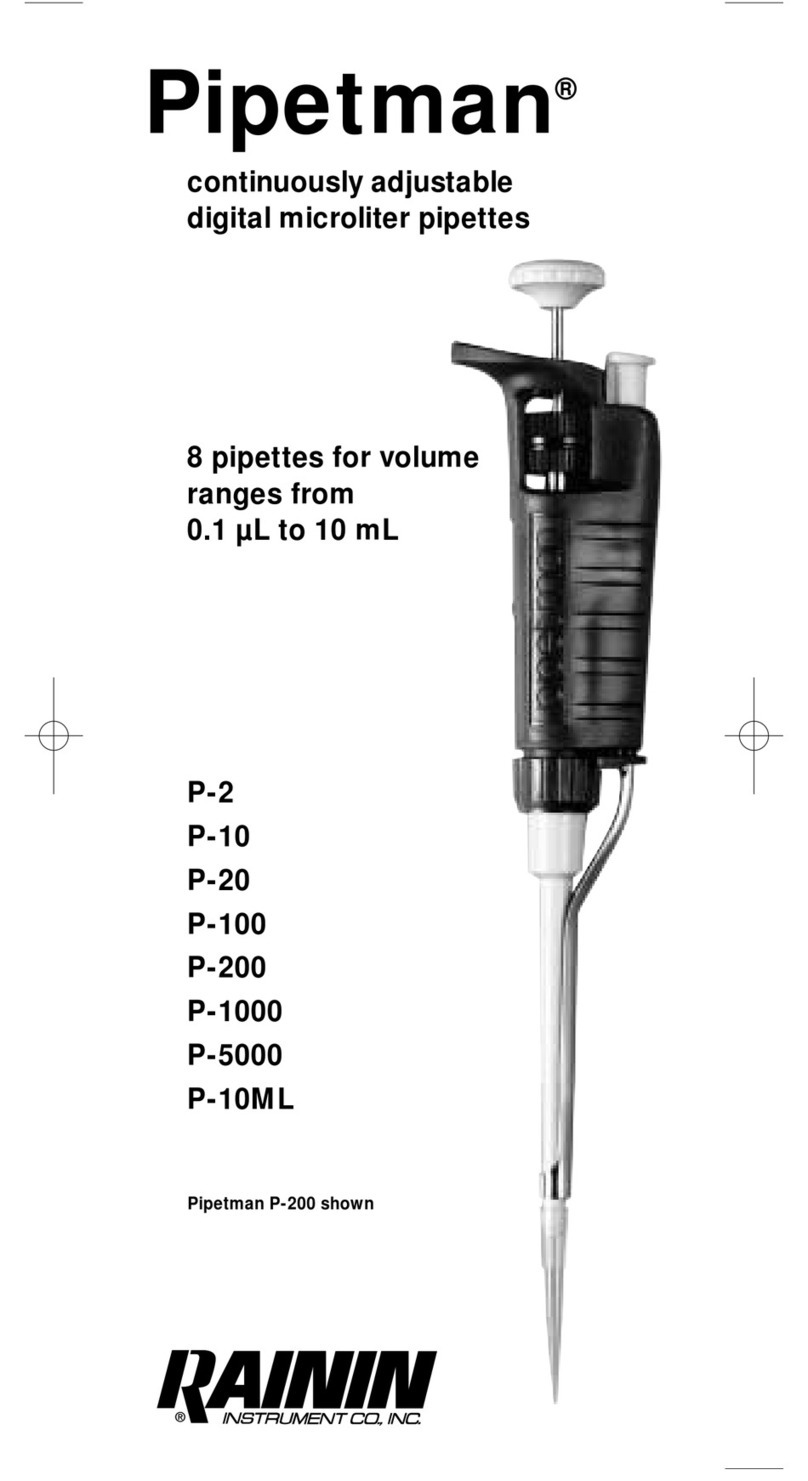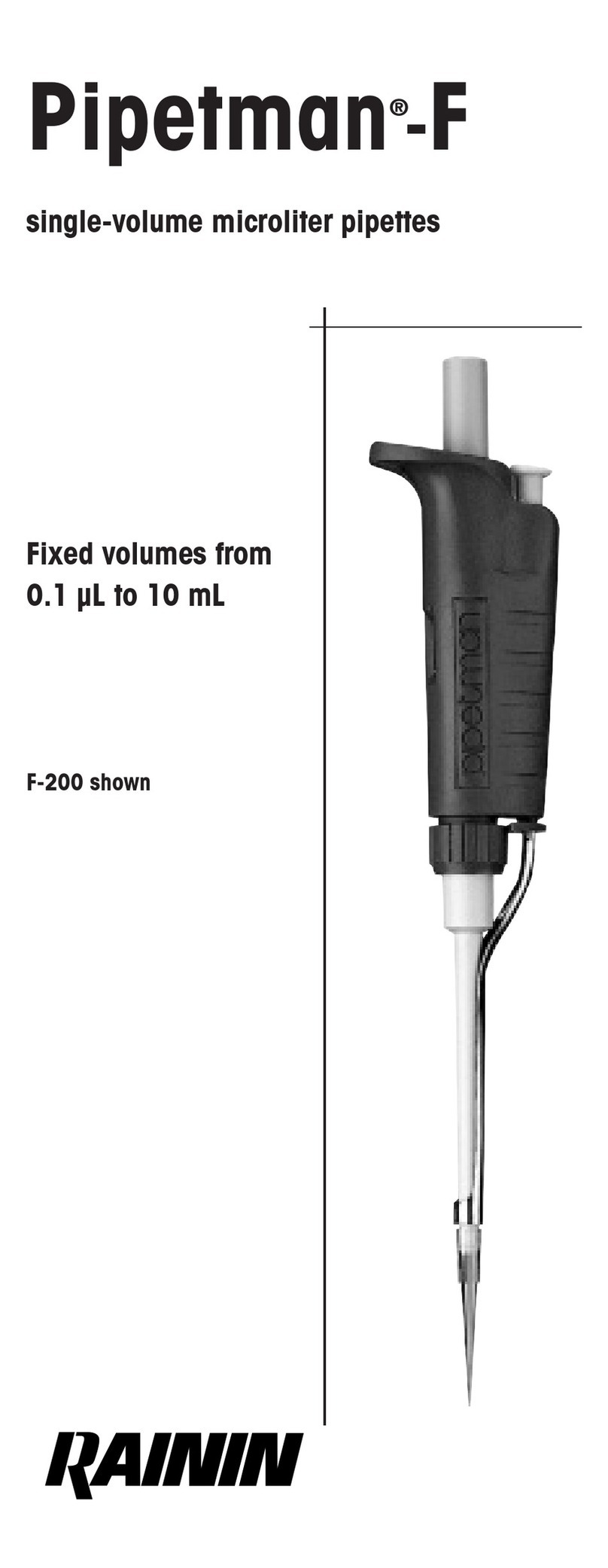7
vessel wall and press the plunger to the FIRST STOP.
Hold this position a few seconds, or long enough for
the liquid column to reach equilibrium again.
6. Remove the tip from the receiving vessel without
blowing out the remaining liquid.
7. Return excess sample in the tip to the original
sample container, if desired. Discard the used tip.
Pipetting Liquids of Varying Density
You can compensate for solutions of density much
different from water, by setting the volume slightly higher
or lower than that required.
The compensation amount must be found empirically:
When pipetting 10 µL of CsCl solution, you determine
that the volume delivered is actually 8.5 µL (≥5 samples).
Try changing the volume setting to 11.8 µL and repeat
the measurements. If the volumes delivered are still not
close enough to 10 µL, make another slight volume
adjustment until the measurements are as desired.
Very dense liquids may not be suitable for air displace-
ment pipetting. Use Microman® positive displacement
pipettes for these liquids.
Temperature Considerations
Warm or cold liquids can be measured with good
precision by using a consistent pipetting rhythm. This will
help minimize any differences in heating or cooling
effects within the pipette. Use new tips each time for
best accuracy and precision when measuring samples
with temperatures greatly different from ambient, and do
not pre-rinse. You will get best results if there is no delay
between picking up samples and dispensing them.
Acids and Corrosives
After pipetting concentrated acids or highly corrosive
solutions you should disassemble Pipetman and inspect
and clean (if necessary) the piston, shaft, and seal
assemblies.
Extensive contact with corrosive fumes may corrode the
pistons in the nozzles. This will result in premature seal
wear and may require refinishing or replacement of the
piston. Exposure of components to corrosive fumes can
be reduced by using aerosol-resistant tips. These tips
have an internal filter which acts as an aerosol barrier.






